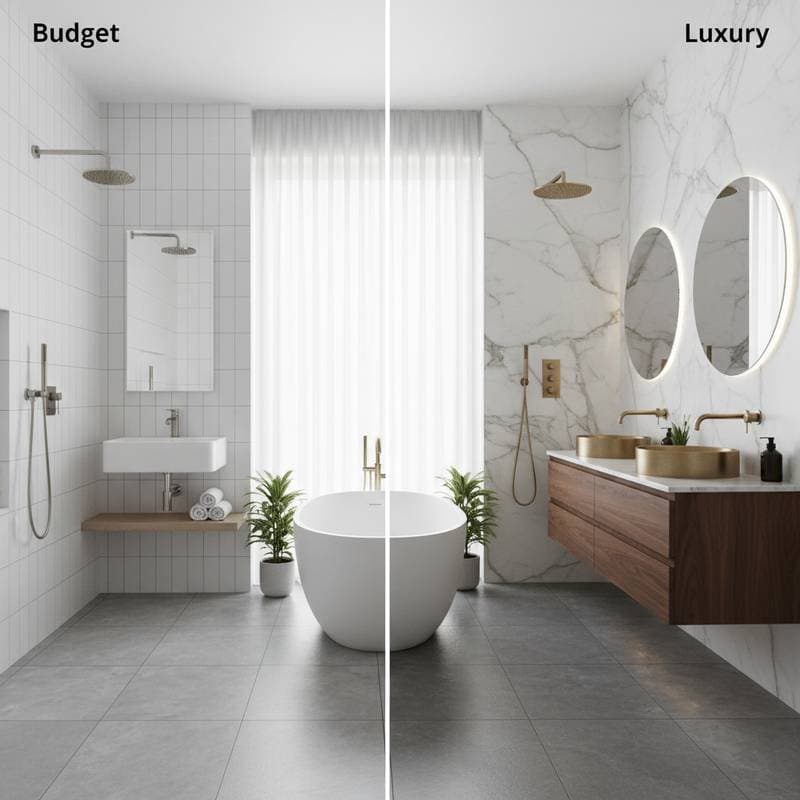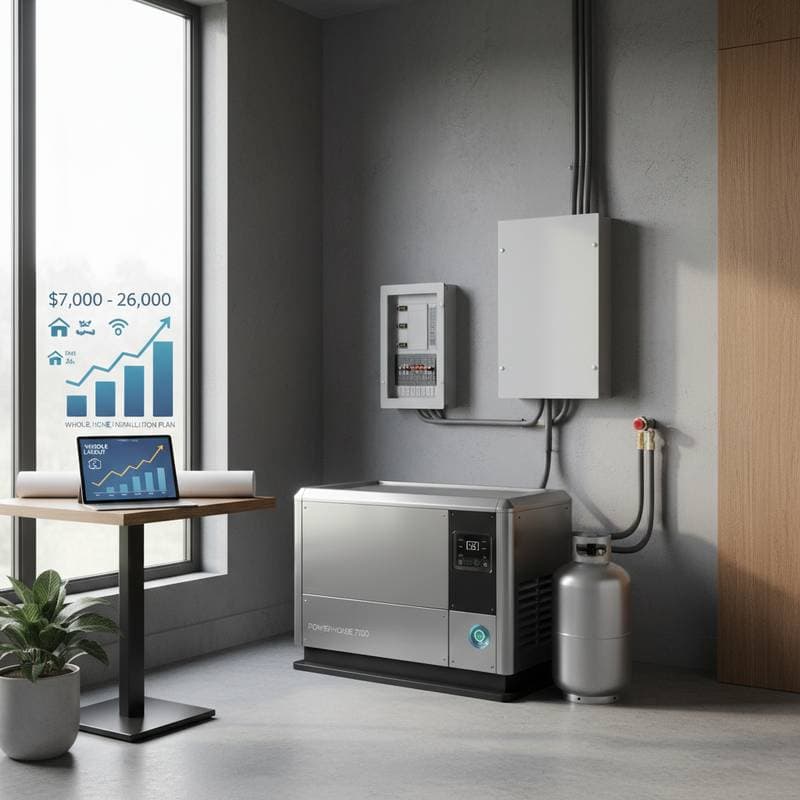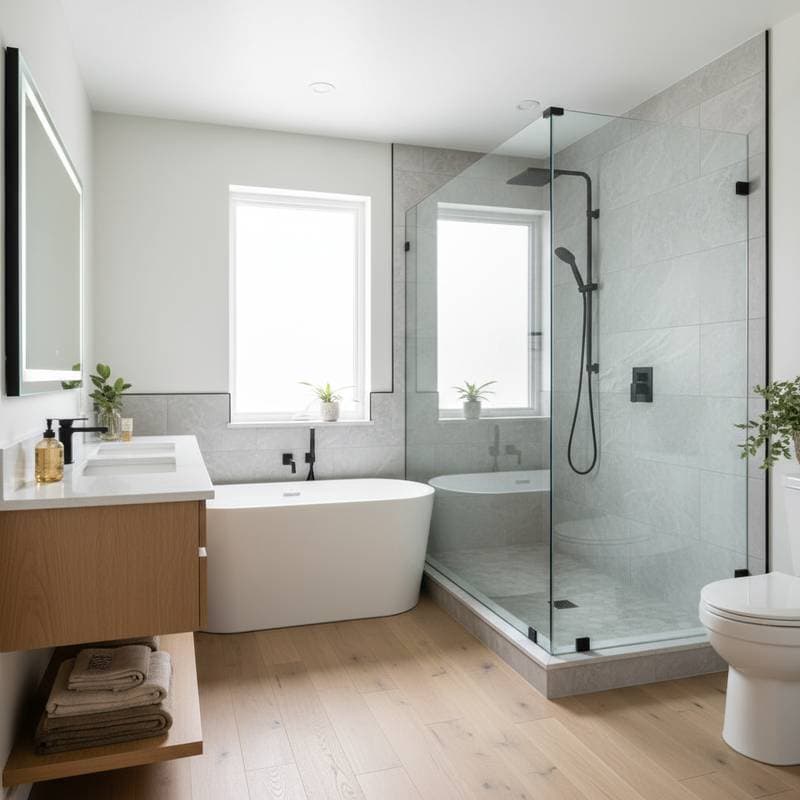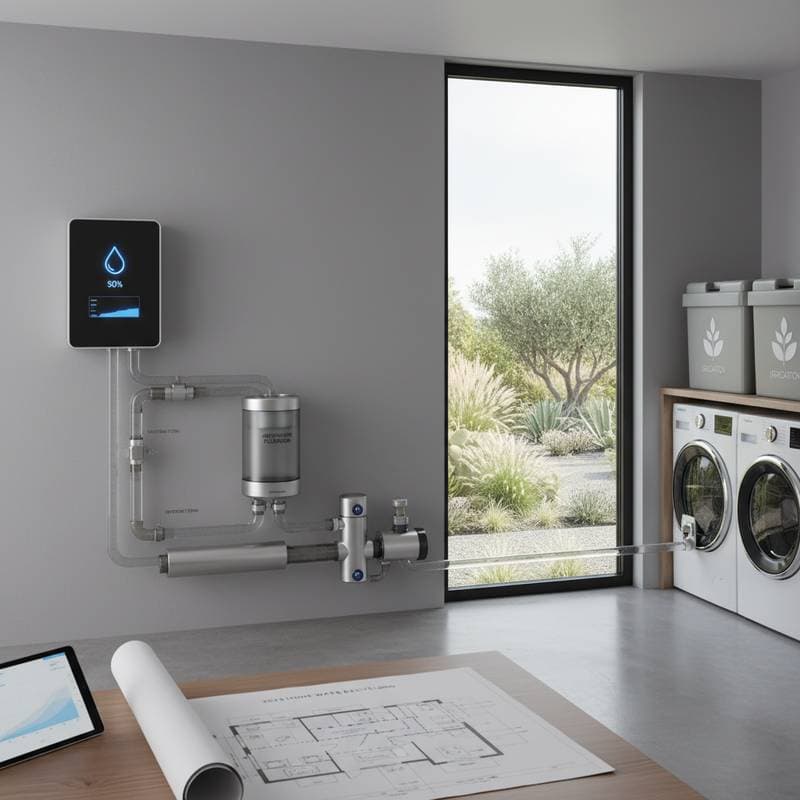2025 Bathroom Remodel: Costs and Smart Splurges
A bathroom remodel can completely change how your home feels and functions. Whether you are updating a small half bath or transforming a master suite, understanding what drives costs and where to spend wisely will help you maximize comfort, functionality, and long-term value. Homeowners often face a key decision: how much to budget, what to prioritize, and when to bring in professionals. This guide explains bathroom remodel costs, cost-saving options, and smart splurges that deliver lasting satisfaction.
Understanding Bathroom Remodel Costs
The cost of a bathroom remodel varies widely depending on the size of the space, the quality of finishes, and the complexity of the work. A small powder room refresh can be relatively affordable, while a complete renovation of a large primary bath can climb into the tens of thousands. To plan effectively, it helps to break down expenses into major categories.
Average Cost Ranges
Typical bathroom remodel costs fall into three broad tiers:
- Budget remodels: Basic updates like new paint, fixtures, and flooring using standard materials. Costs often range from $5,000 to $15,000.
- Mid-range remodels: Partial renovations with upgraded finishes, new vanities, and modern lighting average $15,000 to $30,000.
- High-end remodels: Luxury projects with custom cabinetry, premium tile, and spa-style features often exceed $30,000.
Main Cost Components
Bathroom remodel budgets generally include:
- Labor: Plumbing, electrical, carpentry, and tiling work can account for 40 to 60 percent of the total cost.
- Fixtures and fittings: Tubs, showers, sinks, toilets, and faucets vary greatly in price and quality.
- Cabinetry and storage: Custom or semi-custom vanities add both function and style.
- Flooring and tile: Ceramic, porcelain, and natural stone are popular options, each with its own price point.
- Lighting and electrical: Layered lighting enhances both safety and ambiance.
- Painting and finishes: Fresh paint, trim, and accessories complete the look.
- Permits and inspections: Required for major remodels that include plumbing or electrical changes.
DIY vs. Professional Costs
Taking on some aspects of the remodel yourself can reduce costs, but only if you have the right skills and tools. DIY painting or fixture installation can save a few hundred dollars, while larger tasks like tiling or plumbing often require professional expertise to avoid costly mistakes. Hiring licensed contractors may seem more expensive upfront, but it ensures quality workmanship and compliance with building codes.
Factors Affecting Pricing
Several variables influence how much your bathroom remodel will cost:
- Size of the bathroom: Larger spaces require more materials and labor.
- Scope of work: Full gut renovations cost more than cosmetic updates.
- Material choices: Premium tiles, countertops, and fixtures quickly raise the budget.
- Layout changes: Moving plumbing or electrical lines adds complexity.
- Location: Labor rates and material costs vary by region.
- Age of the home: Older homes might need structural or plumbing upgrades.
When DIY Might Not Save Money
DIY efforts can sometimes backfire. Mistakes in waterproofing, tiling, or wiring can lead to leaks or electrical hazards. Correcting those errors later often costs more than hiring a professional from the start. For most homeowners, combining small DIY tasks with professional installation provides the best balance of savings and reliability.
(Insert cost comparison table here: DIY vs. Professional Bathroom Remodel)
DIY vs Professional: Making the Right Choice
Choosing between a DIY remodel and professional service depends on your budget, skill level, and project goals. Each option has advantages and limitations.
Pros of DIY Remodeling
- Lower initial costs: No labor fees for tasks you complete yourself.
- Personal satisfaction: Completing a project with your own hands can be rewarding.
- Flexible timeline: You can work at your own pace and make adjustments as you go.
Cons of DIY Remodeling
- Steep learning curve: Plumbing, tiling, and electrical work require skill and precision.
- Potential for costly mistakes: Improper installation can lead to water damage or safety issues.
- Time investment: A project that takes professionals a week might take several weekends for a DIYer.
Pros of Hiring Professionals
- Quality assurance: Experienced contractors deliver precise results.
- Time efficiency: Projects are completed faster with coordinated crews.
- Access to expertise: Professionals can handle unexpected structural or plumbing issues.
- Warranty and insurance: Work is often guaranteed, protecting your investment.
Cons of Hiring Professionals
- Higher upfront costs: Labor makes up a significant portion of the budget.
- Less control over schedule: You may need to coordinate around contractor availability.
Safety and Compliance
Bathrooms involve water, electricity, and ventilation. Mistakes can lead to mold growth or electrical hazards. Professional remodelers follow safety standards and local building codes, ensuring long-term reliability. If your remodel includes rewiring, moving plumbing, or installing new ventilation, professional help is strongly recommended.
Time Commitment Comparison
A simple DIY refresh might take a few weekends, while a full remodel with professionals can be finished in a matter of weeks. Hiring experts can minimize disruption to daily routines, an important consideration for households with only one bathroom.
Your Bathroom Remodel Questions, Answered
Answers to commonly asked questions from industry experts.
How much does a full bathroom remodel cost?
A full remodel ranges from $15,000 to $30,000 depending on size, materials, and labor. Luxury upgrades can exceed $40,000 when adding custom features like heated floors or freestanding tubs.
What is included in a typical bathroom remodel?
Most remodels include new flooring, wall tile, vanity, sink, toilet, shower or tub, lighting, and paint. Some projects also involve structural work or layout changes.
Do I need a permit for my remodel?
Permits are usually required for plumbing, electrical, or structural work. Cosmetic updates like painting or replacing fixtures generally do not need one.
What are the biggest cost drivers in a remodel?
Labor, tile work, and plumbing fixtures are the largest expenses. High-end materials and layout changes also raise overall costs.
Can I remodel a bathroom on a small budget?
Yes. Focus on paint, updated hardware, and replacing only worn fixtures. Using prefabricated vanities and affordable tiles helps control spending.
What are smart areas to splurge on?
Splurge on items that add daily comfort and durability, such as high-quality fixtures, good lighting, and efficient ventilation. Heated flooring or a well-designed shower system can make a big difference.
How long does a bathroom remodel take?
Professional remodels typically take two to four weeks depending on scope. DIY projects can extend longer due to limited time and experience.
What are common mistakes homeowners make?
Underestimating budget, skipping waterproofing, and choosing style over function are common pitfalls. Always plan for a contingency fund of about 10 to 15 percent.
How do I choose the right contractor?
Ask for references, verify licenses, and review previous work. A clear written contract and transparent communication are essential for a smooth project.
How should I prepare for a remodel?
Clear out personal items, set up an alternate bathroom if needed, and confirm timelines with your contractor. Having materials ready before work begins helps prevent delays.
Do bathroom remodels increase home value?
Yes. A modern, well-designed bathroom appeals to buyers and can return 60 to 70 percent of its cost in added home value.
What materials last the longest?
Porcelain tile, quartz countertops, and solid brass fixtures are durable and resistant to moisture. Avoid materials that warp or rust easily.
When is the best time to remodel?
Remodeling can be done any time of year, though scheduling during off-peak seasons may reduce labor costs.
What is a good way to save money?
Reuse existing plumbing lines, choose mid-range materials, and handle demolition or painting yourself if possible.
How do I avoid hidden costs?
Request detailed quotes, ask about potential extras like disposal fees, and confirm whether permits are included in the estimate.
How to Decide: Your Step-by-Step Guide
Making the right decision for your bathroom remodel requires careful planning and honest assessment.
Step 1: Assess Your Current Space
Identify what does not work. Are you lacking storage? Is the layout inefficient? Understanding your pain points ensures your remodel addresses real needs rather than just cosmetic desires.
Step 2: Evaluate Your Skills and Resources
If you enjoy hands-on work, you may handle small updates yourself. For plumbing, wiring, or tile installation, professional help ensures safety and quality.
Step 3: Calculate True Costs
Include materials, labor, permits, and potential repairs. Add a contingency cushion for unexpected issues like hidden water damage or outdated wiring.
Step 4: Consider Long-Term Value
Invest in durable materials and energy-efficient fixtures. Spending slightly more upfront can reduce future maintenance costs and increase resale value.
Step 5: Weigh Risks and Rewards
DIY saves money but requires time and precision. Hiring professionals costs more but ensures compliance and reliability. Choose based on your comfort level and schedule.
Step 6: Make the Final Decision
Once you have clear goals, a defined budget, and a timeline, decide whether to hire a contractor or take on parts of the work yourself. Either way, thoughtful planning prevents stress later.
Preparing for Your Bathroom Remodel Project
Preparation is key to a smooth and successful remodel.
Research and Inspiration
Collect ideas from design sites or showrooms. Note materials, colors, and layouts that fit your space. Create a mood board to guide decisions.
Budget Planning
Set a realistic budget and stick to it. Allocate funds for essentials first, then decide where to splurge. Track expenses to avoid surprises.
Site Preparation
Remove personal items, towels, and toiletries. Protect nearby floors and furniture from dust or debris. If you have one bathroom, arrange temporary alternatives.
Timeline Considerations
Discuss timelines with your contractor. Factor in lead times for materials and possible delays. Staying flexible helps reduce frustration.





